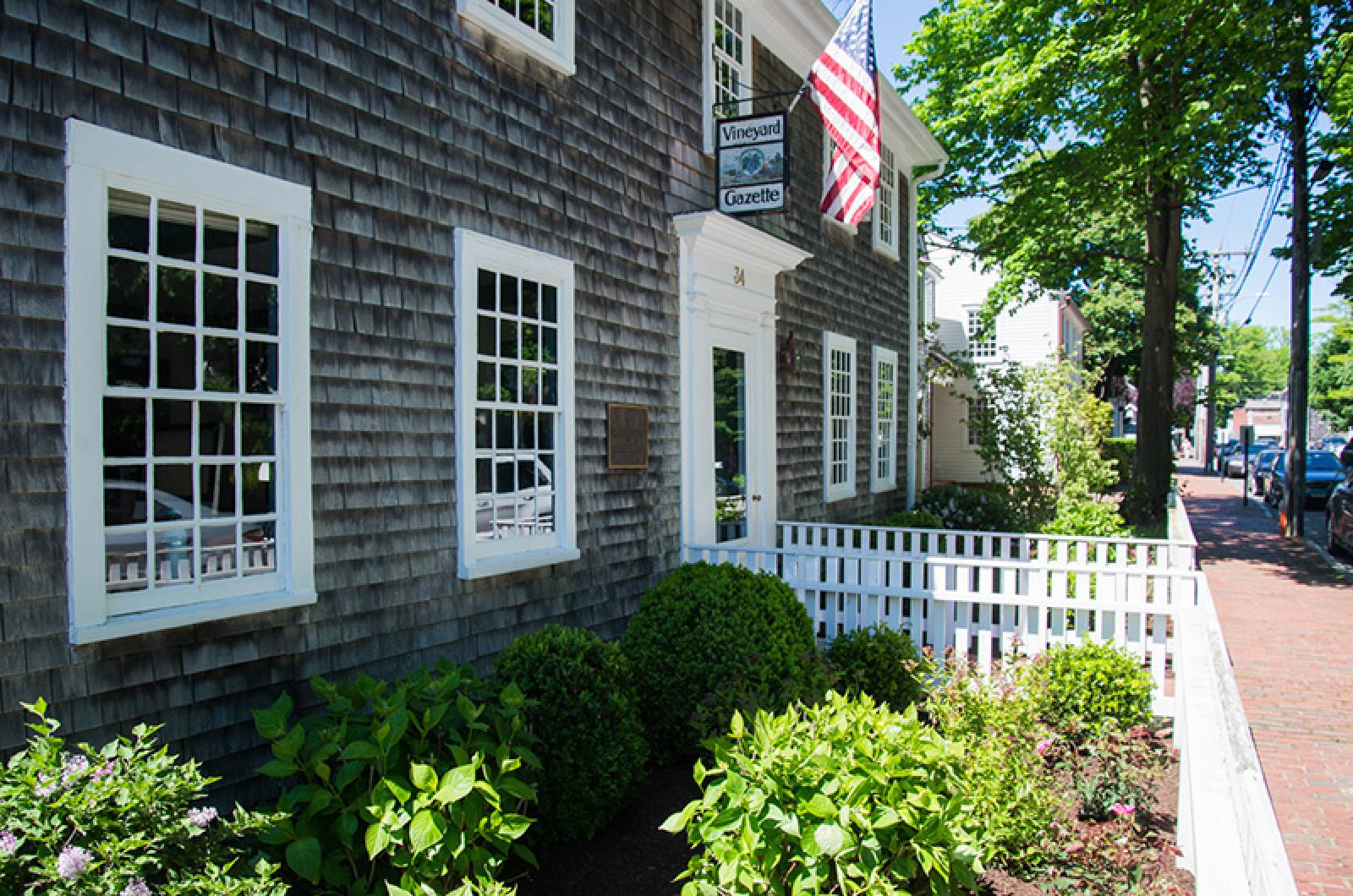Today, May 14, marks exactly 175 years since the first issue of the Vineyard Gazette was published. It was not a Friday in 1846. In its earliest years, this newspaper came out on Thursdays, the change being one of many modest developments in the long evolution of the Gazette that probably seemed momentous at the time.
There is a word for a 175th anniversary — in fact there are several: dodtransbicentennial, doctransbicentennial, septaquintaguinquecentennial, quartoseptcentennial. All are as ungainly as any effort to summarize so many years.
The temptation is to use the occasion to chronicle the history of Martha’s Vineyard, since that’s what this newspaper has recorded to the exclusion of all else. The Island’s story is told through shipping news, advertisements, town meeting warrants, letters to the editor, weather reports, illustrations (and later photos), police logs and lists of Agricultural Fair winners, at least as much as through news stories and editorials. Still-familiar names — Mayhew, Pease, Luce, Manter, Tilton, to name a few — echo through its pages.
In 1996, the Gazette published an extraordinary six-section newspaper to commemorate its 150th anniversary, packed with advertising and filled with stories on the changes at the paper over the years and lookbacks at major events it covered. In 88 broadsheet pages, the paper paid tribute to the many men and women who forged the Gazette’s outsized reputation, from its founder Edgar Marchant to the legendary publisher-editor Henry Beetle Hough and his equally formidable wife, Elizabeth Bowie Hough, to former New York Times columnist James (Scotty) Reston and his wife Sally, to Dick and Jody Reston, who brought the paper into the digital world.
That feat of journalism, featuring photo credits and bylines past and present, is both a comprehensive look at our first 15 decades and a reminder of how much has changed since then. The Gazette has copies of the 150th anniversary edition in its library, and it is well worth revisiting.
Today, we are at another place.
In 2021, newspapers are an endangered species, their business models disrupted by technology, their role in reporting, editing and disseminating information altered by social media, their credibility tarnished by criticism, often fair, sometimes malicious.
That the Gazette endures is a credit first to Jerry and Nancy Kohlberg and their family, who purchased the newspaper from the Reston family in 2010 with the sole aim of ensuring its survival.
“I want the Gazette to be a vibrant voice for the Vineyard community far into the future,” Mr. Kohlberg said at the time, “continuing the wonderful traditions from the past, offering excellent, in-depth journalism, reaching the Vineyard’s diverse communities, and adapting, as necessary, to the changing economic conditions which are affecting print media all across the nation.”
Adapting has meant discontinuing the Tuesday summer newspaper in 2013 and replacing it with a robust website that is updated seven days a week, creating digital newsletters, producing and co-sponsoring events and publishing a growing portfolio of color magazines.
Our coverage has changed a bit too. The Gazette is less focused on breaking news, which moves like wildfire through social media, and more on in-depth reporting to add authority and context to the news. This, we believe, is the value of thoughtful journalism, and one that technology can never replace
The newspaper is also indebted to its advertisers, its subscribers and the exceptional community of Martha’s Vineyard, which supports not one but two newspapers at a time when vast swaths of the country have no local news coverage at all.
Over the next year, the Gazette will celebrate its 175th anniversary by thinking and talking less about our storied past and more about the future of journalism. This summer, the Martha’s Vineyard Museum will host an exhibit marking the newspaper’s anniversary. Speakers and panels are planned in conjunction with the exhibit and with the Martha’s Vineyard Book Festival, which we are proud to co-sponsor once again.
As we look forward to the next 175 years, there are looming questions about how news gets covered and paid for and whether journalism as we have known it is serving increasingly diverse audiences. We thank you for your trust and loyalty, and invite you to join the conversation.







Comments
Comment policy »